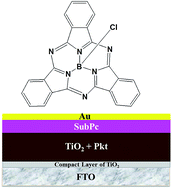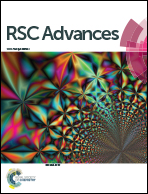Subphthalocyanine as hole transporting material for perovskite solar cells
Abstract
Non planar 14-π aromatic subphthalocyanine has been introduced for the first time as hole transporting material for organometal halide perovskite solar cells and achieved a power conversion efficiency of 6.6%. Cells stored in the dark under ambient conditions underwent an incubation period of nine days during which, we observed an increase in efficiency followed by slow progressive deterioration. However, Raman spectral analysis of pristine perovskite deposited on titania revealed a much faster degradation thus indicating that the subphthalocyanine layer provides a temporary protection to the underlying perovskite layer.


 Please wait while we load your content...
Please wait while we load your content...